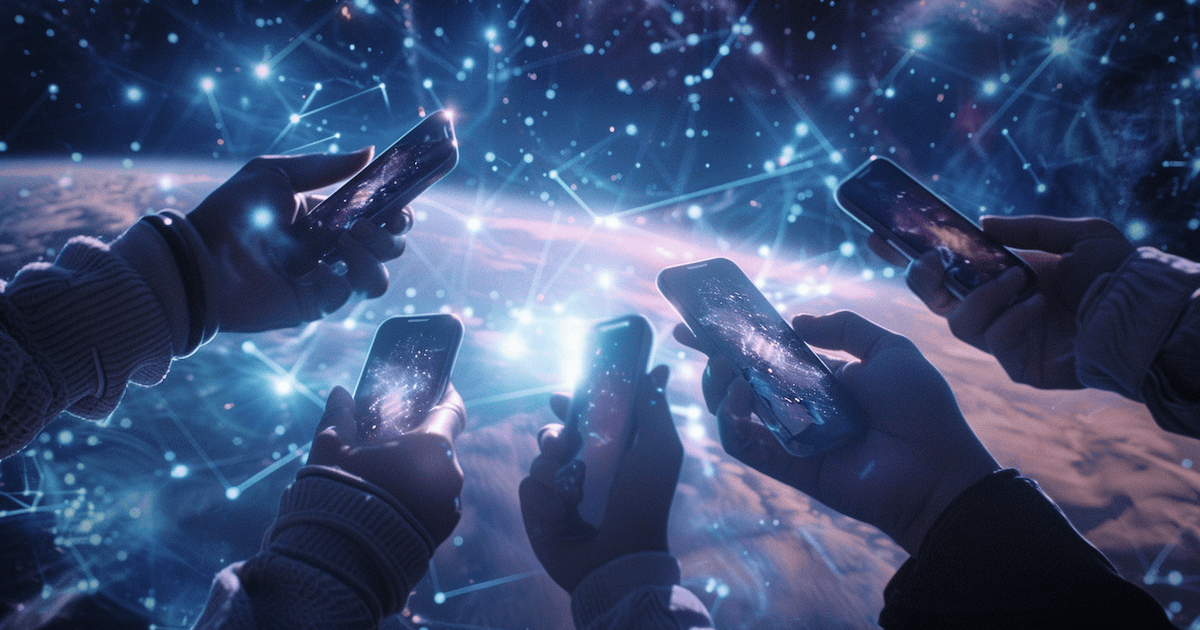
March 11th, 2011 is a day I’ll never forget.
I was working in my office on the 24th story of a large office building in Tokyo, when a magnitude 9.0 Earthquake changed history off the East coast. It was the largest-ever recorded earthquake for Japan.
The sheer force was difficult to understand, even while experiencing it. The power released from the shifting tectonic plates was capable of lifting massive skyscrapers vertically.
And soon after the initial shock… came the horizontal shock waves causing the building to sway several feet back and forth. Drywall began to shatter in the stairwells under the strain.
It was a state of emergency for weeks. Powerful aftershocks came every day. A nearby powerplant suffered huge explosions, visible across Tokyo bay from my office, caused by gas leaks.
My immediate focus was on the safety of my team, and of course family and friends.
But initially, that proved difficult, because all wireless communications networks were down. We couldn’t make calls to one another unless we found a landline. All the trains stopped as well, for fear that the tracks had been damaged. It was complete chaos.
And it was a glaring reminder of how dependent we had become on being connected at all times.
Wireless networks are a lifeline, especially in times of crisis.
In the aftermath of the earthquake, I purchased satellite phones right away. One for my Tokyo office, one for my Osaka office, and one that I carried with me everywhere.
They were big and bulky with large antennas that extracted — quite a bit larger than what’s available these days, but they were the only choice back then.

Not only were they expensive (the ones that I purchased were about $1,800 each), the monthly subscriptions were more than $100 a month, and the cost per minute of usage was several dollars.
Even today, a monthly satellite phone rental can run $199 with additional costs for minutes.
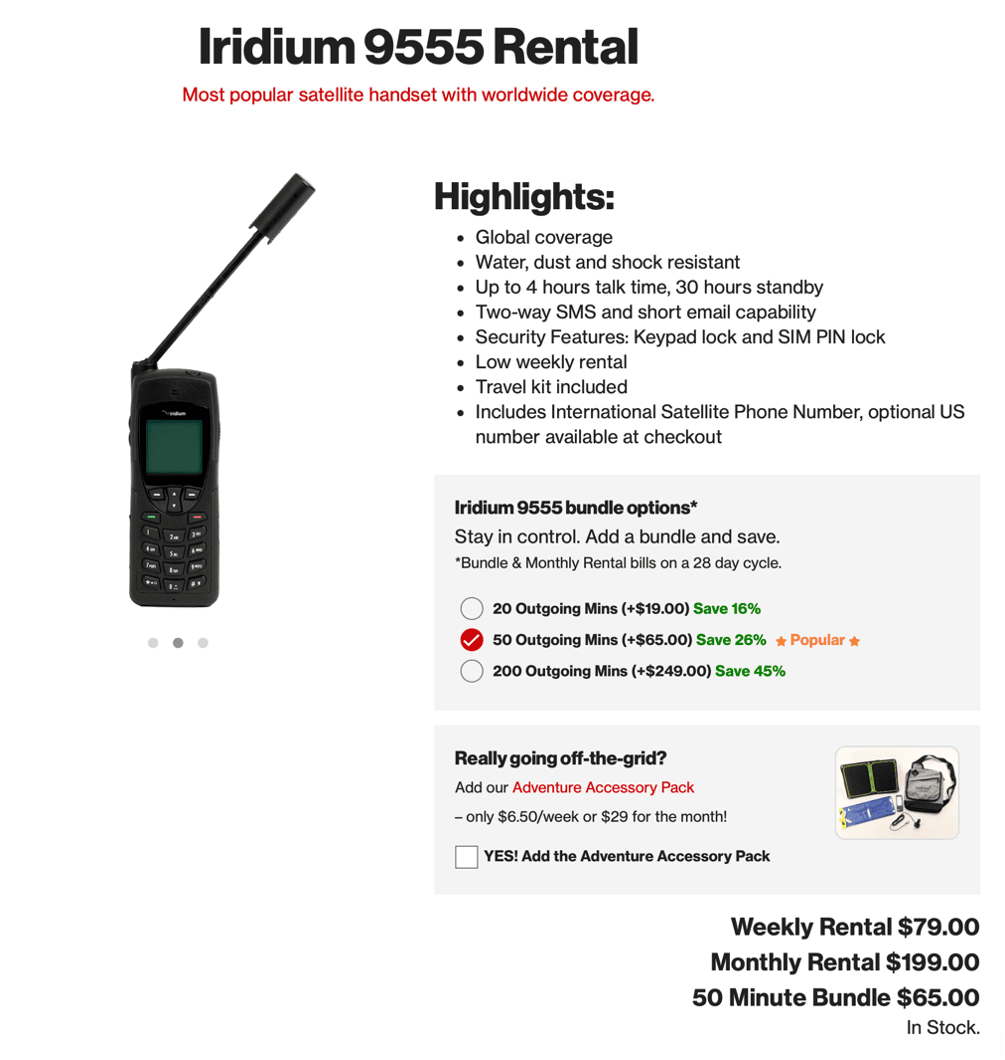
But in the last year or so, there has been a major trend developing in the wireless industry — known as direct to device (D2D) — enabling satellite-to-smartphone communications. It sounds impossible I know, but it works.
Some refer to this technology as a 5G satellite to smartphone service, or cell towers in space, and finally there is some truth to that…
But there is quite a bit of nuance to the technology, and what it can and cannot do.
Despite how ubiquitous wireless network coverage appears to us all, the reality is that only 15% of the world’s surface is within reach of a wireless network signal. And even today, about 5% of the world’s population lives outside of basic network coverage.
Coverage continues to improve, but with less densely populated areas, the cost of building wireless infrastructure exceeds the business opportunity for mobile network operators, so there will always be a gap in terrestrial wireless network coverage.
And for those who sail, hike, or work in remote locations, there will always be a need to stay connected, and — at a minimum — have access to emergency services.
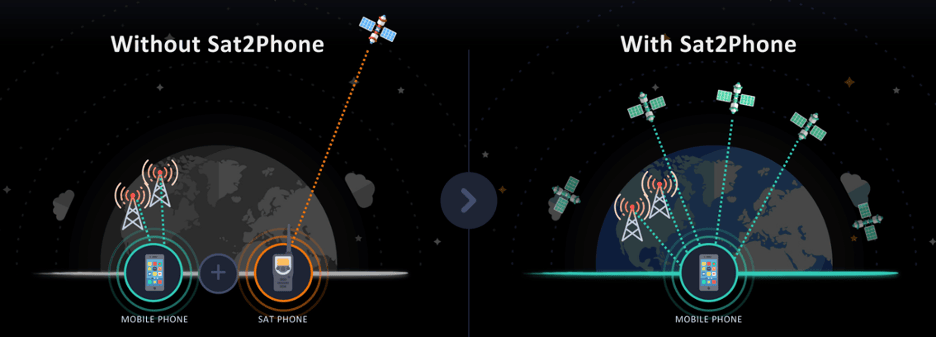
That’s where direct to device technology comes into play.
And because the technology can work with a standard smartphone, the costs of using this technology is a fraction compared to the cost of using traditional satellite phones in the past.
The traditional satellite phone industry is about be turned upside down, and an entirely new industry is being created.
The market opportunity for just messaging over smartphone to satellite links is about $80 billion a year.
And that’s why mobile network operators (MNOs) have been racing to establish partnerships to offer these new subscription and emergency services to their wireless subscribers.
Some of us might remember in late 2022, when Apple made a big announcement about “Emergency SOS” services that would be made available on the Apple iPhone 14 and iPhone 14 Pro.
It was unusual, because Apple isn’t a mobile network operator — it’s a consumer electronics company, most well-known now for its smartphones, which now make up slightly more than 50% of Apple’s total revenues.
And what it did was smart. Apple invested $450 million from its Advanced Manufacturing Fund into building the infrastructure (in space and on Earth) to enable satellite-to-iPhone services. The majority of that investment was made into Globalstar (GSAT), a legacy satellite services company that is unprofitable, burning through cash, and saddled with almost $400 million in debt.
Said another way, Globalstar wouldn’t have made the upgrades without Apple’s financial support.
The best part is that anyone with an iPhone 14, iPhone 15, or the iPhone 16, which will be released later this year, has access to the Emergency SOS service.
And as with all things Apple, it is easy to use (as long as you have an iPhone 14 or iPhone 15):
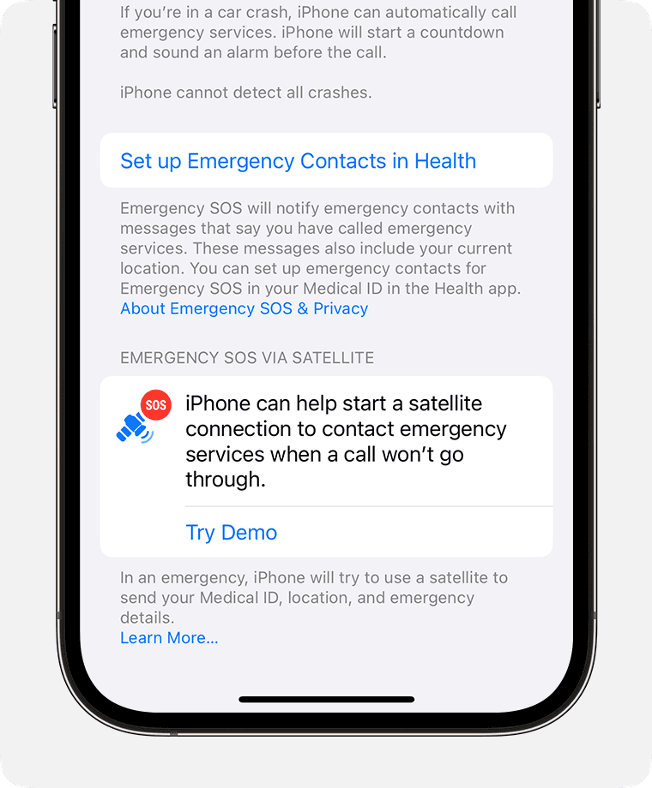
Simply stand outside with a clear view of the sky. Go to settings and tap on “Emergency SOS” and “Try Demo.”
There are instructions to help guide us to point the iPhone in the right direction to connect with the satellite.
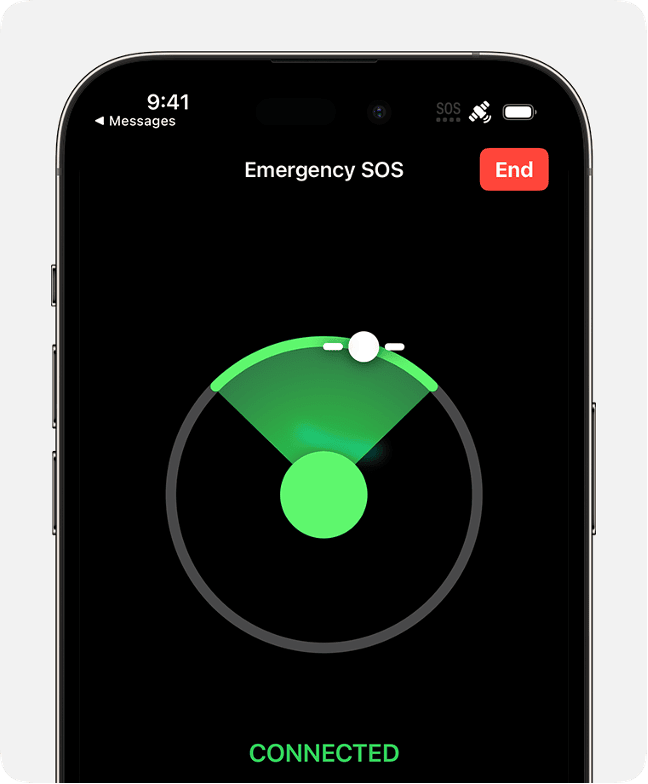
This is possible because the newer iPhones have added receivers and transmitters that operate in the same frequency band as the Globalstar satellites. We can’t make phone calls, download e-mails, or surf the internet, but we can send messages using this system.
And right now, that’s a whole lot better than being lost in the woods or the desert with no cell phone coverage… or being stuck on the side of a remote road with an overheated engine.
But it has really been the wireless operators that have wanted to monetize a service like this, hoping to grab part of that $80 billion-dollar addressable market for remote/emergency messaging services.
AT&T was originally first out of the gate with a deal signed with AST Space Mobile (ASTS) back in 2018 to offer similar services.
But the race has heated up in just the last two weeks.
AT&T upgraded its deal with AST Space Mobile for higher bandwidth services like voice and video calls directly between smartphones and satellites.
And Verizon wasn’t far behind at all. Just this week, Verizon announced a $100 million deal with AST Space Mobile for similar smartphone-to-satellite broadband services.
The major difference is that Verizon is paying AST Space Mobile, a small cap company with less than $100 million in cash, also unprofitable, and burning through cash, in order to fund AST’s tech upgrades to operate at the 850 MHz frequency.
The strategic significance of this is that any modern phone that operates on Verizon’s network will be able to use AST’s satellite network, regardless of the phone that they have. Very smart move by Verizon.
And T-Mobile was in the game in summer 2022, when it announced its big deal with SpaceX and its Starlink network.
Given SpaceX’s resources, it didn’t need a large upfront payment like Globalstar or AST Space Mobile…
SpaceX launched its first direct to device (D2D) Starlink satellites into orbit this January… and T-Mobile demonstrated sending text messages using the smartphone to satellite service. The texting services will become commercially available later this year and will be upgraded to support video and data in 2025.
And again, what’s amazing about these services is that — other than having the receivers/transmitters that operate at the same frequencies as the satellites — these are otherwise unmodified, off-the-shelf smartphones.
What’s most interesting about the race to D2D services is that the company that is farthest ahead is the one that no one is talking about.
Lynk Global has been around since 2017. It invented what it calls a cell tower in space, which is basically what it is.
In 2022, it launched its first space-based cell tower — Lynk Tower 1. And later that year, it was the first company to receive a commercial license from the Federal Communications Commission (FCC) for satellite to smartphone services.
Today, Lynk now has three space-based cell towers and signed about 40 deals with mobile network operators around the world covering 50 countries, and almost as many governments have licensed Lynk’s technology/services.
Lynk invented and patented the use of 2G, 3G, 4G, and 5G technology between satellites and smartphones. In that sense, Lynk is the giant in this space, and it is in the process of raising capital to invest further in its technology platform to support broadband data applications.
This February, Lynk Global announced its plans for a reverse merger with special purpose acquisition corporation SLAM Corp. (SLAM). A reverse merger of a such a high-quality company like Lynk is simply a way to raise capital and access the public market’s quickly and cheaply. It appears that the combined company will be formed at an $800 million valuation.
The final details of the reverse merger, its strategic investors, and how much capital it will receive at the time of the business combination are not yet know. But this is one to watch. Lynk Global is easily one of the most interesting reverse mergers in history.
And these satellite to smartphone services are a win for everyone…
The wireless industry will unlock an addressable market between $300-400 billion for broadband D2D services delivered, just by using satellites and smartphones.
And in the (hopefully unlikely) event that wireless networks are taken down by a government to control or inhibit free communications, or wireless networks are subject to a cyberattack… this technology is a potential answer to enabling us to keep in touch.
In short, no matter where we are in the world, even when we’re stuck in a dead zone, we’ll have access to communications via satellite.
We always welcome your feedback. We read every email and address the most common comments and questions in the Friday AMA. Please write to us here.